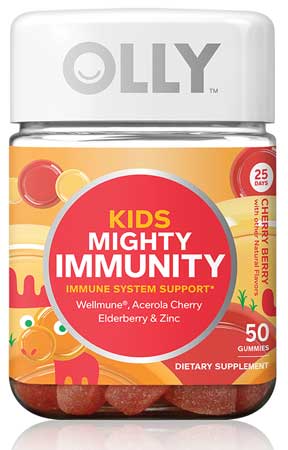Nutrition for Toddlers and Tykes
NUTRACEUTICALS
The time that infants take their first steps and start toddling around is a memorable one. It’s the start of a new stage of life filled with growing independence. For parents, their evolving toddlers also bring about new nutritional concerns.
“Toddlers and preschoolers are experiencing rapid bone, muscle, and brain and nervous system development,” observes Tamara Melton, Academy of Nutrition and Dietetics spokesperson. “The foods that a child eats should support these developing systems.”
Melton notes the importance of specific nutrients. “Calcium and vitamin D are needed for healthy bone development. Iron is for muscle and nervous system development. Not enough iron can lead to developmental delays such as mental, motor, and behavioral functioning. Iron toxicity can also be a danger for toddlers and preschoolers, so supplementation is not recommended. Fiber helps to prevent constipation. And fluids are needed to prevent dehydration and constipation.”
Here is a look at some of these ingredients and nutrients as well as some top-of-mind parental concerns.
Immunity
Daycare facilities, nurseries, and preschools are often one of the first environments where toddlers are exposed to a multitude of germs, making immune health important.
 A proprietary yeast beta 1,3/1,6 glucan, Wellmune, from Kerry Ingredients, Beloit, Wis. (kerrygroup.com, wellmune.com), is backed by clinical studies supporting its immune health benefits. The ingredient is derived from the cell wall of a highly purified, proprietary strain of baker’s yeast (Saccharomyces cerevisiae). The company explains that once swallowed, Wellmune is transported to immune organs throughout the body. It is digested by macrophages into smaller fragments and slowly released over a number of days. The fragments bind to neutrophils, the key immune cells in the body. Wellmune primes and strengthens the key immune function of neutrophils, which can then move more quickly throughout the body.
A proprietary yeast beta 1,3/1,6 glucan, Wellmune, from Kerry Ingredients, Beloit, Wis. (kerrygroup.com, wellmune.com), is backed by clinical studies supporting its immune health benefits. The ingredient is derived from the cell wall of a highly purified, proprietary strain of baker’s yeast (Saccharomyces cerevisiae). The company explains that once swallowed, Wellmune is transported to immune organs throughout the body. It is digested by macrophages into smaller fragments and slowly released over a number of days. The fragments bind to neutrophils, the key immune cells in the body. Wellmune primes and strengthens the key immune function of neutrophils, which can then move more quickly throughout the body.
Meng (2016) showed that Wellmune significantly decreased total episodes of common childhood infection illnesses and episodes of upper respiratory tract infections for children aged 12–48 months in a daycare setting. The 12-week study conducted in China included 174 children who had experienced at least two episodes of upper respiratory tract infection in the previous three months. They were randomized into two treatment groups (35 mg or 75 mg of Wellmune yeast beta-glucan) or a placebo group. The children who were given Wellmune were significantly healthier during the study period than those given the placebo. During the 12-week course of the study, 85% of children in the placebo group experienced one or more episodes of infectious illness. By contrast, 47% of the children who took 75 mg/day yeast beta-glucan and 32% of the children who took 35 mg/day yeast beta-glucan experienced a significantly reduced incidence of infectious illness. The children in the placebo group had significantly higher upper respiratory tract infection incidence per child and more days with upper respiratory tract infection symptoms compared to either Wellmune group.
In April 2016, a new product containing Wellmune for children was launched. OLLY, San Francisco, Calif. (olly.com), introduced a children’s gummy vitamin, OLLY Kids Mighty Immunity, combining the yeast beta-glucan with acerola cherry, elderberry, and zinc.
 Probiotics have become more mainstream ingredients thanks to their digestive and immune health benefits. DuPont Nutrition & Health, New Century, Kan. (dupont.com, danisco.com), offers HOWARU Protect Kids (10 billion CFU of Bifidobacterium lactis Bi-07 and Lactobacillus acidophilus NCFM). Leyer et al. (2009) demonstrated that daily dietary probiotic supplementation for 6 months was a safe and effective way to reduce fever, rhinorrhea, and cough incidence and duration and antibiotic prescription incidence, as well as the number of missed school days attributable to illness, for children 3–5 years of age. In the double-blind, placebo-controlled study, 326 children were assigned randomly to receive placebo, Lactobacillus acidophilus NCFM, or HOWARU Protect Kids. The study was conducted from November to May, when children are particularly vulnerable to seasonal illness because of inclement weather conditions.
Probiotics have become more mainstream ingredients thanks to their digestive and immune health benefits. DuPont Nutrition & Health, New Century, Kan. (dupont.com, danisco.com), offers HOWARU Protect Kids (10 billion CFU of Bifidobacterium lactis Bi-07 and Lactobacillus acidophilus NCFM). Leyer et al. (2009) demonstrated that daily dietary probiotic supplementation for 6 months was a safe and effective way to reduce fever, rhinorrhea, and cough incidence and duration and antibiotic prescription incidence, as well as the number of missed school days attributable to illness, for children 3–5 years of age. In the double-blind, placebo-controlled study, 326 children were assigned randomly to receive placebo, Lactobacillus acidophilus NCFM, or HOWARU Protect Kids. The study was conducted from November to May, when children are particularly vulnerable to seasonal illness because of inclement weather conditions.
Dietary Fiber
Melton mentions the importance of fluids and fiber to prevent constipation in toddlers. Fluids help fiber in the diet work better, making children’s stools more normal and regular. Generally, if a child is eating at least 5 servings of fruits and vegetables each day along with other foods that are good sources of fiber, there is not a great need to count fiber grams. Otherwise, a general rule is to add 5 to a child’s age for the number of grams of fiber each day.
Taiyo International, Minneapolis, Minn. (taiyointernational.com), recently announced that Health Canada approved health claims for its Sunfiber related to its ability to relieve intestinal issues related to childhood constipation. Sunfiber can also claim that it helps to improve intestinal regularity in children, provides a gentle relief of constipation in children, and helps to improve bowel regularity. The ingredient is a galactomannan-based soluble dietary fiber made from hydrolyzed guar gum.
Protein
Protein is important for muscle building in toddlers. Most of the protein consumed at this stage should come from meat, poultry, fish, tofu (2 servings/day), dairy (2–3 servings/day), and legumes (2 servings/day). Healthy snacks offer another alternative to getting some protein and other nutrients into toddlers’ diets.
Arla Foods Ingredients, Viby J, Denmark (arlafoodsingredients.com), developed a suite of protein- and calcium-rich snacking solutions for kids. Among them is an easy-to-eat “dairy bar” that offers as much calcium per serving as one glass of milk. It is 2% protein and low in calories. Benchmarked against a typical chocolate bar, it contains one-third less energy, and since more of the calories come from protein, energy release in the body is optimized. Other innovative application solutions in the new snacking range include a yogurt bar, a healthier dessert, a drinking yogurt, and a snack cake with less than 100 calories/serving.
--- PAGE BREAK ---
Whole Grains
Whole grains have been shown to help children with weight maintenance as well as in academic performance. Dong et al. (2015) provided evidence for targeting specific food and beverage groups in an effort to influence weight outcomes. In a three-year period in children aged 7–13, the foods that were associated with weight loss were whole grains and high-fiber cereals.
Ptomey et al. (2016) showed that both breakfast consumption and the content of the breakfast meal may be associated with improved standardized test performance in elementary school students. Data were collected from 698 elementary students living in Kansas. The results showed that breakfast consumers had significantly higher scores on the achievement tests compared to non-breakfast consumers. For the breakfast consumers, consuming greater servings of whole grains was significantly related to higher scores in reading comprehension and fluency and mathematics.
Getting kids to eat whole grains is much easier now with the availability of novel whole grain ingredients. Flour supplier and innovator Ardent Mills, Denver, Colo. (ardentmills.com), offers a range of traditional, specialty, and whole grain flours and ingredients. The company showcased some of its most recent grain-based industry solutions at the 2016 International Baking Industry Exposition in October 2016. Ultragrain High Performance Flour offers whole grain nutrition with exceptional gluten strength, higher absorption, and lower formula costs. Simply Milled is a line of clean label flours with no bleach, bromate, or other additives. Ancient grains and new heirloom wheats include quinoa and new additions such as organic spelt and triticale.
 Isomaltulose, Memory, and Mood
Isomaltulose, Memory, and Mood
Research carried out by Swansea University in Wales showed that an isomaltulose-based breakfast beneficially influenced children’s memory and mood (BENEO 2016). The study used Palatinose, a fully digestible disaccharide-type carbohydrate derived from beet sugar. Due to its unique linkage, it is fully yet slowly digested and absorbed, providing balanced and sustained energy with a lower blood glucose rise and less insulin release. BENEO, Morris Plains, N.J. (beneo.com), produces the ingredient.
The study was conducted with 75 school children aged 5–11. On two occasions, at least one week apart, the children consumed a breakfast meal that included corn flakes, milk, yogurt, jam, and orange juice. The meals were prepared with either Palatinose or glucose and were identical in calorie count as well as macronutrient composition. The results showed that the children who consumed the food made with Palatinose maintained significantly better memory performance later in the morning than those who consumed the food made with glucose. They also reported having better moods later in the morning. Anke Sentko, vice- president of regulatory affairs and nutrition communication at BENEO, commented, “The study’s results show that BENEO’s slow release carbohydrate Palatinose can make a difference to cognitive performance and mood in children. We know that children around the age of 4 to 10 years have a much higher rate of brain glucose utilization than adults and seem to be particularly susceptible to the differing effects of glucose release. Accordingly, children’s cognitive functions benefit most from the replacement of fast glucose-release carbohydrates with the slow and sustained glucose supply of Palatinose.”
Natural Colors
In addition to nutritional concerns, parents are looking for more natural, simple ingredients in the foods and beverages their toddlers consume. Kalsec, Kalamazoo, Mich. (kalsec.com), conducted an online survey in 2015 of 1,023 parents in the United States and the United Kingdom who had children aged 3–12. The survey results showed that 80% of parents preferred naturally sourced colors over synthetic colors when choosing foods and beverages for their children. In addition, 83% indicated that they were more likely to purchase a food product for their children if it contained a naturally sourced color instead of a synthetic color. Kalsec offers a line of natural colors derived from fruits, vegetables, and other natural sources. They cover an extensive range of yellow, orange, red, and green hues.
Lastly, with toddlers, it’s important to remember that toddlers have small stomachs and are very active, says Melton. “They only need about 1,000-1,400 calories per day,” she notes. “Therefore, it’s important that parents and caregivers offer a variety of foods at meal time, serve the food on small, toddler-size plates, and make the food easy to eat with little hands.” She adds that even if a child doesn’t like a food when it is first offered, parents and caregivers should continue to serve that food because it can take more than 20 times before the child will taste it and eat it.
Next month’s Nutraceuticals section will discuss protein ingredients.
www.ift.org
Members Only: Read more about ingredients used in formulating foods for toddlers and younger children at www.ift.org. Type the keyword into the search box at the upper right side of the home page.
 Linda Milo Ohr,
Linda Milo Ohr,
Contributing Editor
Denver, Colo.
[email protected]
References
BENEO. 2016. “Research Confirms BENEO’s Palatinose Enhances Memory and Mood in School-age Children.” Press release, Oct. 25. BENEO, Morris Plains, N.J. beneo.com.
Dong, D., M. Bilger, R. M. van Dam, and E. A. Finkelstein. 2015. “Consumption of Specific Foods and Beverages and Excess Weight Gain Among Children and Adolescents.” Health Aff. 34(11): 1940–1948.
Leyer, G. J., S. Li, M. E. Mubasher, C. Reifer, and A. C. Ouwehand. 2009. “Probiotic Effects on Cold and Influenza-like Symptom Incidence and Duration in Children.” Pediatrics. 124(2): e172–179.
Meng, F. 2016. “Baker’s Yeast Beta-Glucan Decreases Episodes of Common Childhood Illness in 1 to 4 Year Old Children during Cold Season in China.” Journal of Nutrition & Food Science. 6: 518.
Ptomey, L. T., F. L. Steger, M. M. Schubert, et al. 2016. “Breakfast Intake and Composition is Associated with Superior Academic Achievement in Elementary Schoolchildren.” J. Am. Coll. Nutr. 35(4): 326–333.


